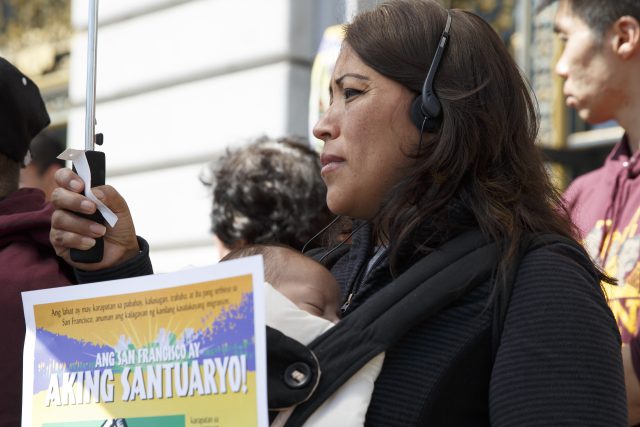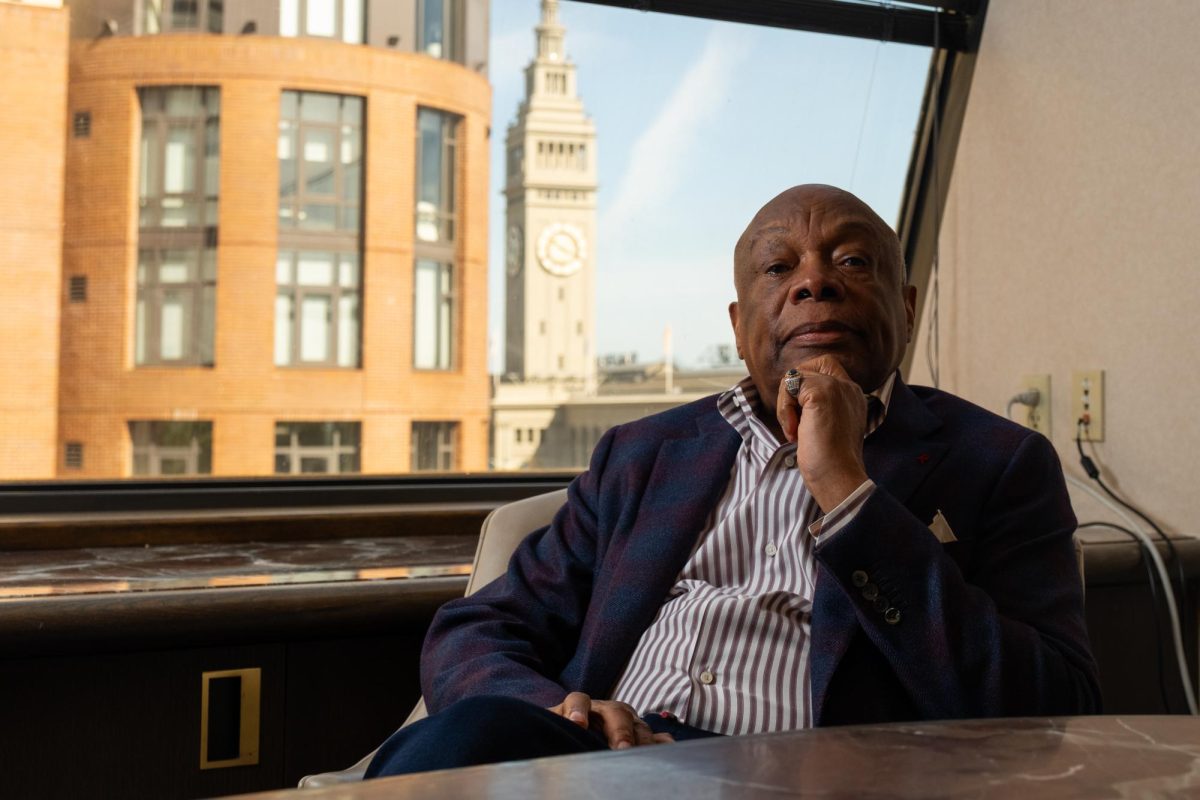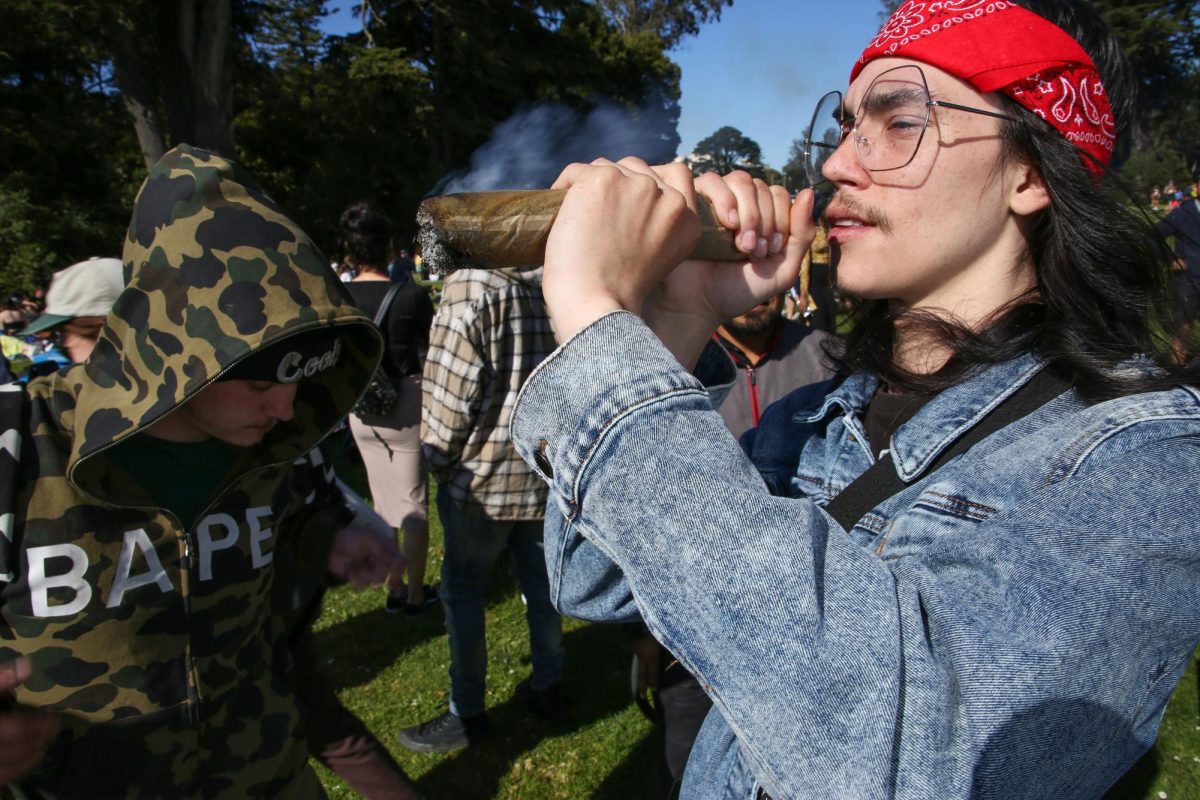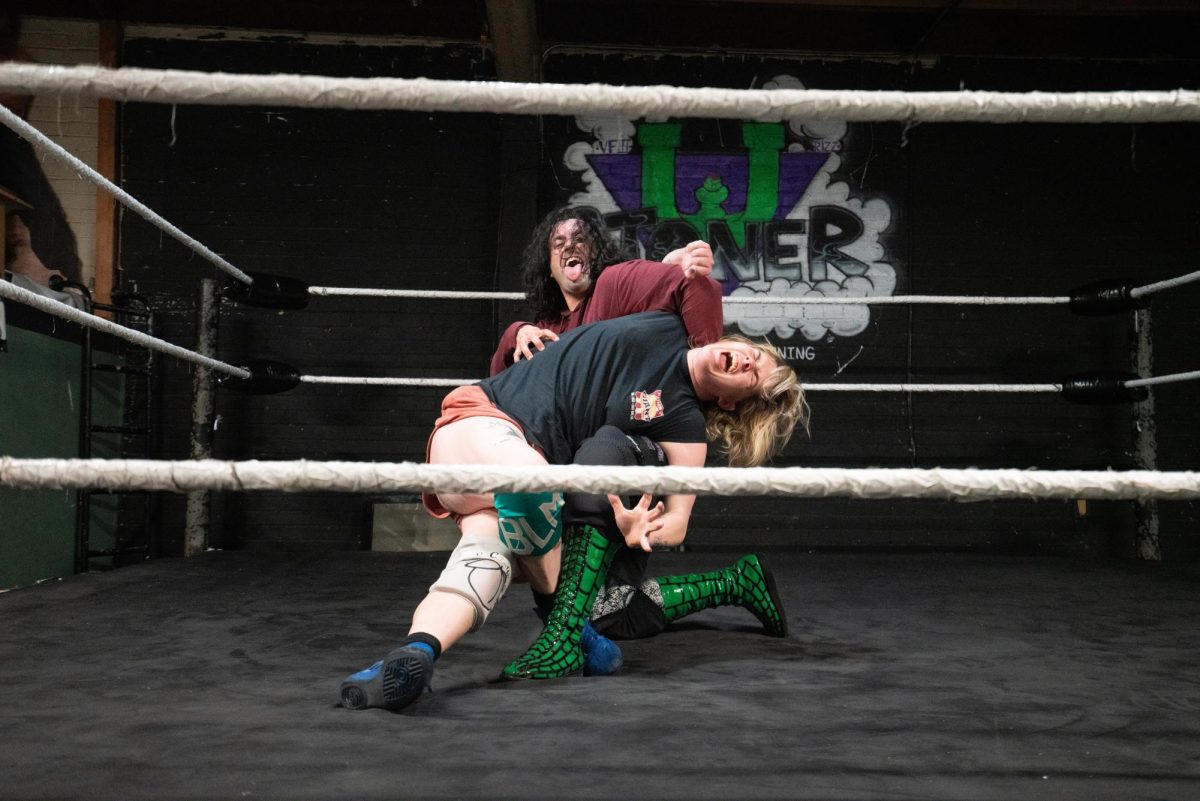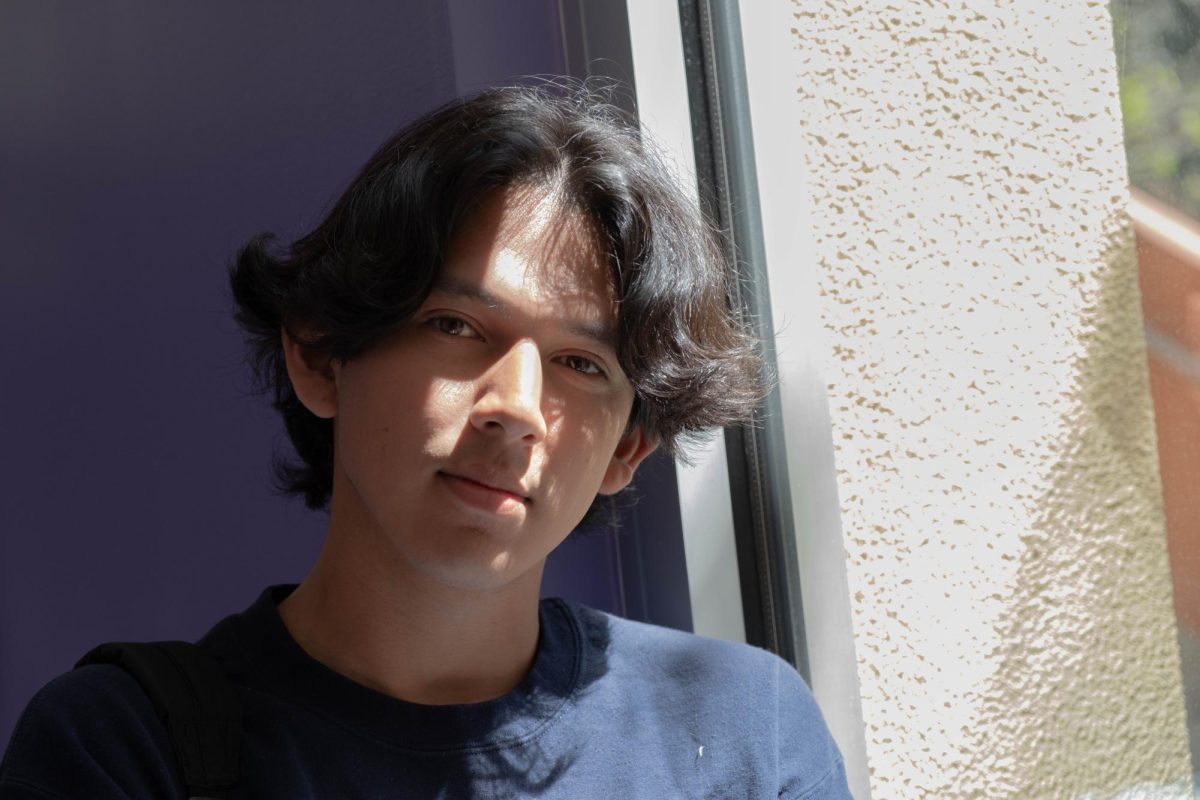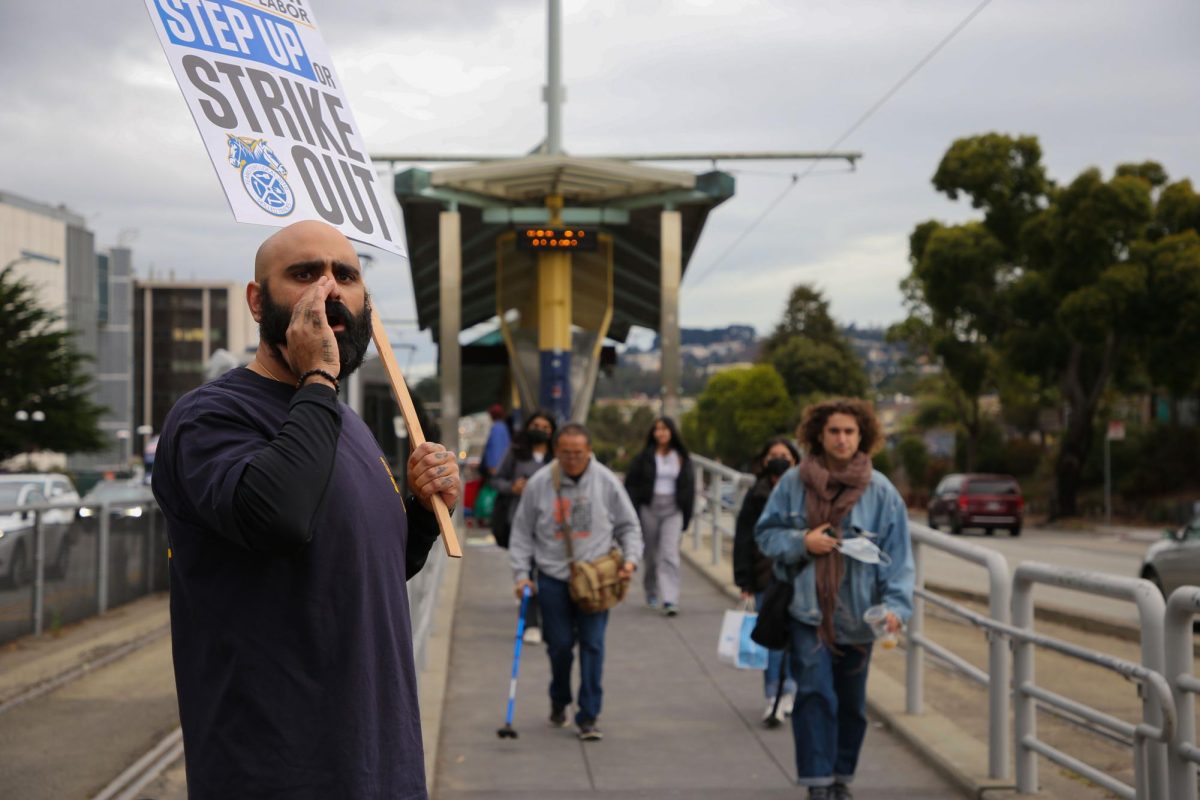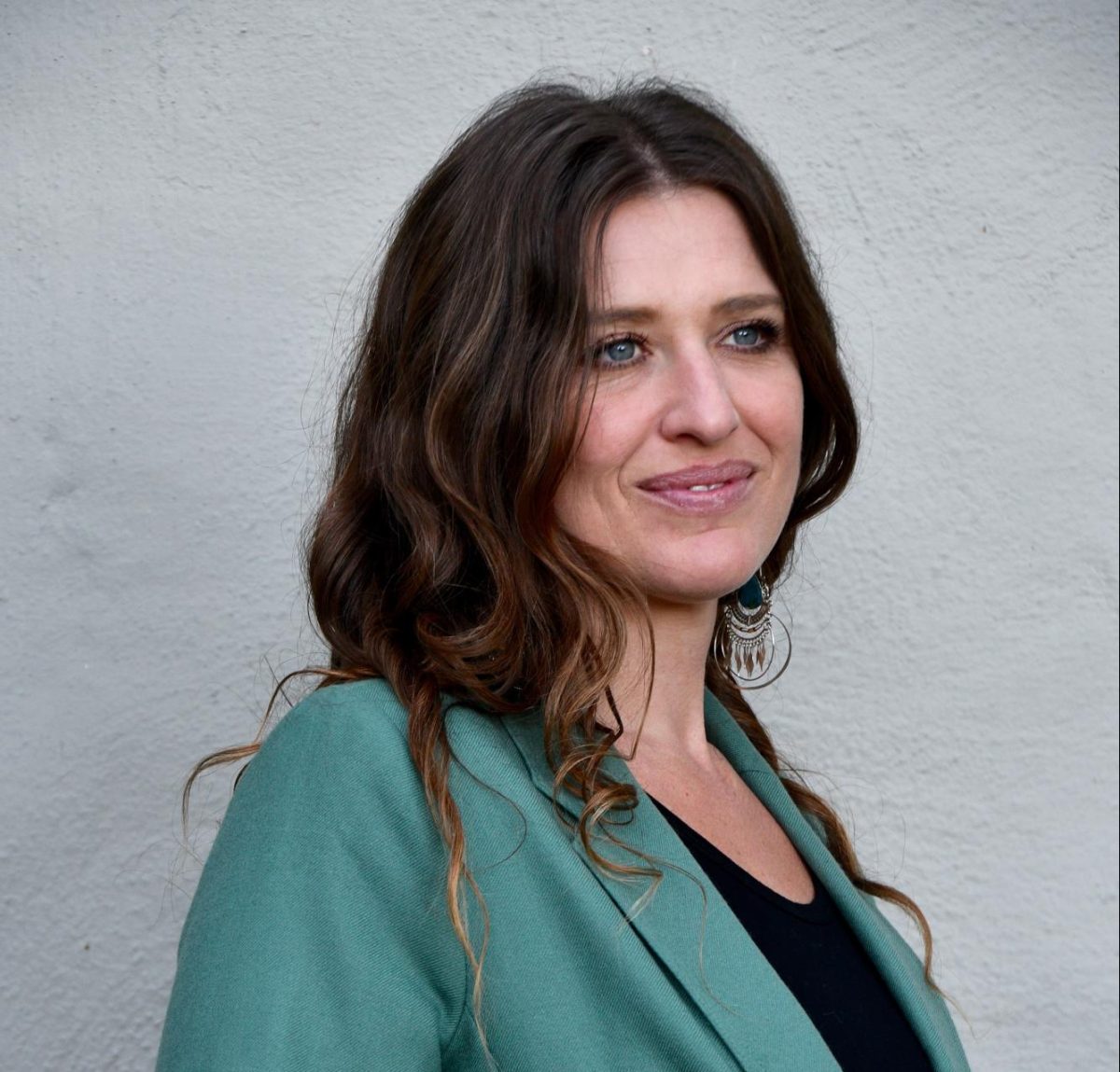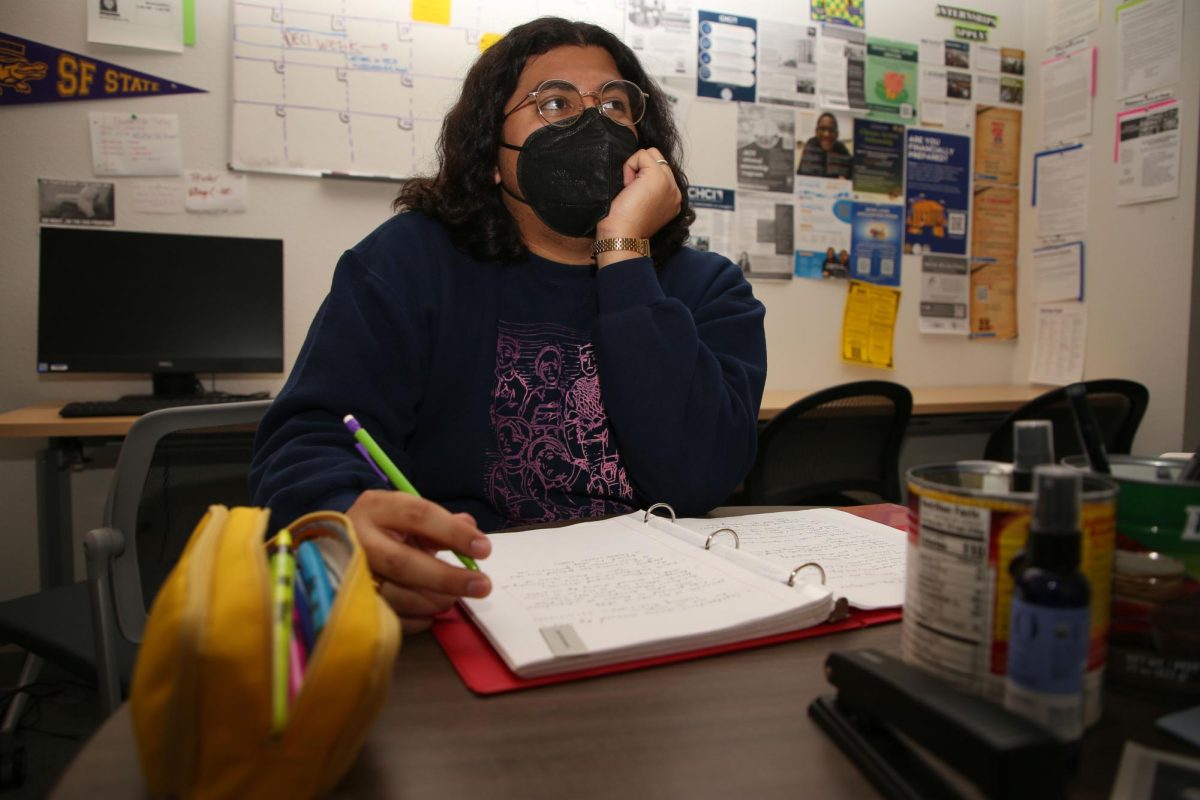By: Brandy Miceli
People from around the world gathered under the trees of Frank Ogawa Plaza in Oakland to share their stories of brutal violence, sexual assault, and yearning hunger during their journey to the United States from their homelands — the hot spring day complementing their zeal to be heard.
With mouths full of homemade tamales rojos y verdes, folks chanted, “Undocumented, unapologetic, and unafraid!”
This event, put on by the Immigrant Youth Coalition, Coming Out Of The Shadows (COOTS), was a place where they could express themselves in the streets of Oakland, one of over three hundred sanctuary cities across the country.
“Folks are eager to tell their stories,” Yadira Sanchez, an activist with the Immigrant Youth Coalition, said.
Sanctuary cities erupted into recent headlines following the death of Kathryn “Kate” Steinle, a thirty-two-year-old San Francisco woman, at the hands of Juan Francisco Lopez-Sanchez, an undocumented immigrant. He had been deported five times, and served over twenty years in jails and federal prisons for felony drug charges and re-entry since 1991. In 2009, less than three months after his fifth deportation, Lopez-Sanchez was charged with another felony re-entry, and served five years in prison.
On March 26, 2015, the United States Bureau of Prisons turned Lopez-Sanchez over to San Francisco authorities for an outstanding marijuana charge. Immigrations and Customs Enforcement (ICE) requested to detain him until they could pick him up. The marijuana charge was ultimately dropped, and due to San Francisco’s sanctuary policy, the Sheriff’s department did not honor ICE’s detainer request and released him on April 15, 2015. Three months later, he was taken into custody for shooting Steinle.
Sanctuary city policy limits cooperation between local law enforcement and ICE. They’re designed to build trust between local police and immigrant communities by allowing them to report crime without fear of being deported. This policy is an aberration with completely divided views; some abhor and some support.
Steinle’s death led to a political standoff. Republicans quickly proposed a bill that would cut federal funding to cities with sanctuary status, and require a mandatory five-year minimum sentence for any undocumented immigrant who was deported and is caught upon re-entry, as part of “Kate’s Law.” Democrats swiftly blocked the bill. All republican candidates for the 2016 presidential election have vowed to end sanctuary cities, and this stance has gained support through numerous conservative outlets.

“When you start talking about sanctuary cities that harbor criminal aliens, then that’s just indefensible on any level,” said Joe Guzzardi, National Media Director and Senior Writer for Californians for Population Stabilization (CAPS). CAPS is an anti-immigration organization that works to formulate and advance policies and programs designed to stabilize the population of California, the U.S., and the world, according to its website. The organization is involved with a campaign that would eliminate sanctuary cities, blaming the policy for loss of life beyond Steinle.
“There have been hundreds of similar cases over the years that don’t merit a mention in any papers or newspapers other than perhaps the local ones,” Guzzardi said, suggesting this incident gained coverage because it happened at a popular tourist destination in San Francisco to a “ridiculously attractive” young woman. “What happened to Kate Steinle is not in any way out of the ordinary,” he said.
Francisco Ugarte, Attorney for the San Francisco Public Defender and immigration expert, suggested it’s no wonder why the event gained so much attention considering the timeliness of Donald Trump’s candidacy annunciation.
“Trump talked about them [undocumented immigrants] as rapists, as criminals, that when they come here they don’t bring their best, they bring their worst,” Ugarte said, “And I think that this case nicely fits into a hysterical xenophobic narrative.”
So much so that the court has been so far unwilling to consider the fact that Steinle’s death was unintentional. Lopez-Sanchez’s case is being charged as a murder, when the bullet fired was accidental and ricocheted off the cement.
“He handled a gun that discharged and unfortunately killed Kate Steinle,” said Matt Gonzalez, chief attorney at the San Francisco Public Defender and Lopez-Sanchez’s attorney. “If he were a caucasian college kid, if he were a U.S. citizen, if he had been eighteen years old, if he had been seventy-five years old, I don’t think he gets charged with a crime… We don’t know of there ever being a case in San Francisco of a ricochet being charged as a murder.”
Although that is seemingly critical to the case, it gained less attention than the topic of sanctuary cities. Even though sanctuary cities have plenty of democratic supporters, former San Francisco Sheriff Ross Mirkarimi was publicly lambasted for not honoring ICE’s detainer request and releasing Lopez-Sanchez from custody, even by Mayor Ed Lee. Justifiably, San Francisco’s new Sheriff Vicki Hennessy is necessitating reform while recognizing the benefits that sanctuary cities have on all citizens.

During San Francisco’s Board of Supervisors Public Safety and Neighborhood Services Meeting, Hennessy proposed not to eliminate sanctuary policy, but to create guidelines by which she would communicate with ICE.
“What I am trying to do,” she said at the meeting, “is target the few violent criminals that may not be part of the community, not be working toward rehabilitation.”
The question quickly became one that Americans on both wings share: are sanctuary cities safe for the American population?
The American Immigration Council found that immigrants are less likely to commit crime than people born in the United States. Between 1990 and 2013 the foreign-born share of the U.S. population grew from 7.9 percent to 13.1 percent and the number of undocumented immigrants more than tripled from 3.5 million to 11.2 million.
During the same period, FBI data indicated that the violent crime rate declined 48 percent — which included falling rates of aggravated assault, robbery, rape, and murder. Likewise, the property crime rate fell 41 percent, including declining rates of motor vehicle theft, larceny/robbery, and burglary. This demonstrates that higher immigration is associated with lower crime rates, including both documented and undocumented immigrants.
According to Mother Jones, since San Francisco enacted its sanctuary city laws 26 years ago, homicides have fallen to their lowest level in decades.
The Public Policy Institute of California found that in California, a state with a large population of undocumented immigrants, the incarceration rate for foreign-born adults is 297 per 100,000 adults, while the incarceration rate for people born in the U.S. is 813 per 100,000 adults.
It’s difficult to conclusively say the impact that sanctuary cities have on the United States, when skewed views on sanctuary cities have muffled the truth about them. It’s true that sanctuary policy has inadvertently caused loss of life. But the complexity of this issue requires looking at the proportion of undocumented immigrants who commit murder, before threatening to deport even non-criminals as some politicians have, claiming that a disproportionate amount are criminals.
The Department of Homeland Security figures state that between 2010 and 2015, 124 undocumented immigrants were released from immigration custody and were later charged with murder. CNN Politics found that is only a thousandth of a percent of the total number of undocumented immigrants in the United States, estimated at 11.2 million, making up four percent of the United States population.
Most undocumented immigrants do not have a criminal record. They come here to seek better lives. They raise families and are contributing members to society who want to feel like part of the community.
Folks munched on pan dulce and sipped coffee under the morning sun as the San Francisco Immigrant Legal and Education Network (SFILEN) celebrated their tenth anniversary with Immigrant Family Day, a day of community building activities, a press conference, and sharing of testimonies on the steps of San Francisco City Hall. SFILEN is a network of thirteen nonprofit organizations dedicated to providing immigrants with legal services to better their lives.
“In today’s political climate, it is more important than ever to celebrate the achievements of the ten years of work of SFILEN,” said Omar Ali of the Arab Resource and Organizing Center. “It is indicative of the power of grassroots organizations. It is a testament of all the ways we can work together to ensure that the people feel dignified, even for some of the most undignified groups.”
San Francisco Board of Supervisors member John Avalos spoke about his proposed measure that would ban local law enforcement from notifying ICE when an individual will be released from local custody, except in very limited circumstances. San Francisco’s Sanctuary City and Due Process for All ordinance currently does not specifically forbid pre-release notifications.
“We’ve created this network of people from all over the world who are unified in protecting immigrants,” Supervisor John Avalos said, “…We’re now looking at how we can protect our sanctuary city policy and make sure we can keep people out of immigration proceedings. That’s before us at the Board of Supervisors on May 10.”
The Board of Supervisors will vote whether to implement Avalos’ proposal or to accept Sheriff Hennessy’s new guidelines. Considering that vote, in addition to Lopez-Sanchez’s trial on May 12, the future of San Francisco as a sanctuary city is unknown. What is known, is that immigrants will relentlessly fight to keep their home as it is now — a sanctuary.


